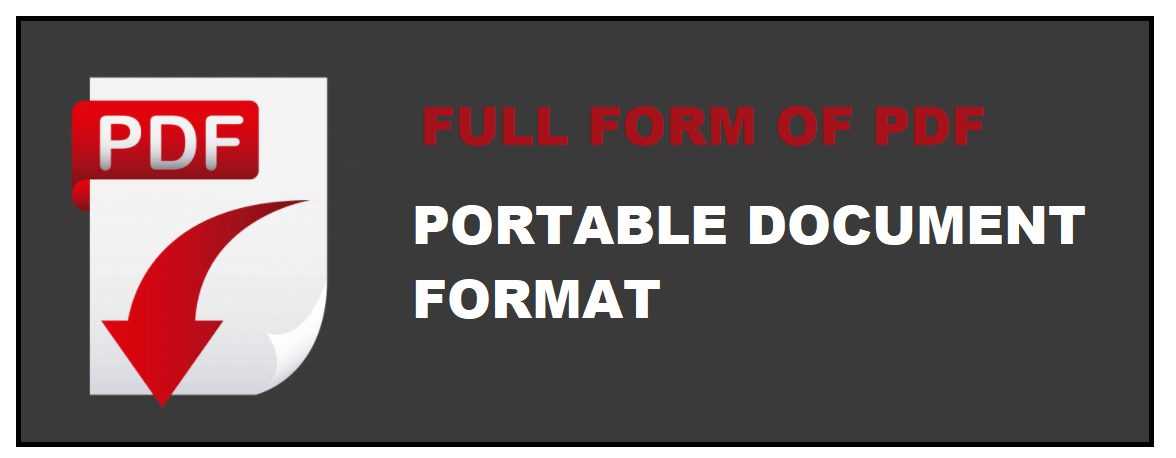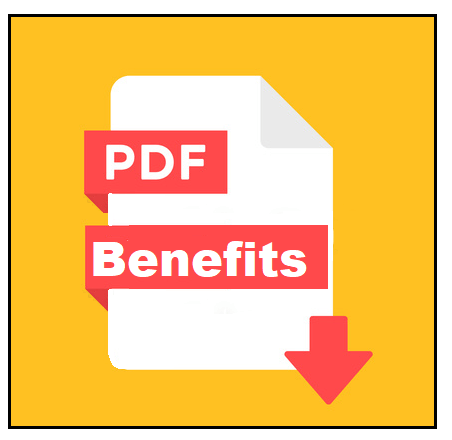Full Form of PDF
Full Form of PDF
PDF are the most common application used in every cooperation and organization. In Today’s era, it is widely used by students as well for creating and exchanging notes. But do you know what does PDF stands for?
The abbreviation PDF stands for Portable Document Format.

What is PDF?
“PDF or Portable Document Format is a file format that catches all the components of a printed paper as an electronic image that the user can easily open, view, operate, carry, print or forward to someone else.”
Portable Document is free to use file format required to present documents in a special format. It is independent of application software and computer hardware and works properly on various operating systems. Hence, it is also knowns as 'Machine independent'. PDF was introduced in the early 1990s to view the document as an image. This format was initially produced and launched by Adobe Systems.
The PDF file format was invented in 1990 by Adobe to simplify the sharing of files between computers and across various OS platforms. PDF files are created by the applications, unlike Adobe Acrobat, Acrobat Capture or related software. PDF files are primarily beneficial for documents where the user wants to preserve the initial visual appearance online and don't want the files to be modified or changed, such as magazine articles, packaging designing, catalogs files, flyers, etc. A PDF file can carry one or more page images, in which you can zoom the pages in on or out as per your requirement.
The overviews of PDF are as follows:
| Filename Extension | |
| Uniform Type Identifier (UTI) | com.adobe.pdf |
| Developed by | Adobe Inc. (1993 to 2008)ISO (2008 to present) |
| Released at | June 15, 1993 |
| Extended versions | PDF/APDF/EPDF/UAPDF/VT PDF/X |
| Standard | SO 32000-2 |
| Latest Versions | 2.0 |
| Open Format | Yes |
| Magic number | |
| Official website | https://www.iso.org/standard/75839.html |
Benefits of PDF

The PDF format has grown an industry-standard worldwide in the few decades. Millions of PDF files are uploaded, passed around, and stored in our day-to-day lives. There are various factors that add-on to its extreme following for both ease and professional use. The several benefits of PDF are as follows:
- User-Friendly and Portable: Anyone can view the PDF file format on any electronic device, irrespective of the operating system being used, with the only requirement of a PDF reader app (such as Adobe Acrobat Reader). Even without a PDF reader, you can directly open your PDF file easily on your internet browser.
- Easy to Access: PDF documents are pretty light in size. Thus, it is very easy and fast to transfer a PDF file from one device to another. They also reduce the storage space and upload time. Unlike Word, PPT, notepad, and Excel, the various Microsoft formats can also be converted to a PDF format, in its original formatting, in seconds.
- No Modification: By default, one cannot amend a PDF document's content as the data stored in the file gets converted into an image, but there are certain third party apps, through which the user can change it.
- Upholds interactive functions: PDF supports interactive forms that can help import and export data as per the user's requirement.
- Highly securable: PDF supports a smooth and secure approach for transmission and sharing of data via emails. It also provides the amazing feature of customizing the level of user access.
- Electronic signatures: In professional world, PDF is a boon. Its interactive features have made it a mandate application for all business digital documentation. It supports electronic (or digital) signatures to sign and seal PDFs.
- Free to use: PDF documents can be created, viewed, analyzed, transferred and stored freely without any cost.
- Encrypted with Passwords: PDFs files can be encrypted so that a password would be required to open, view or amend the PDF document.